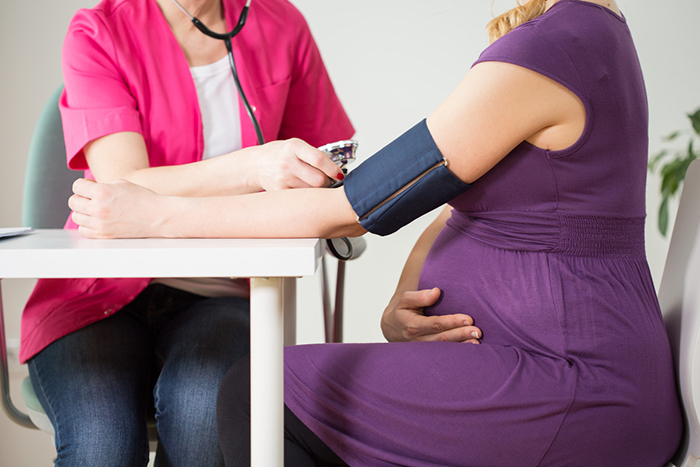
Exposure to high levels of certain common air pollutants in early pregnancy may increase the risk of pregnancy-induced high blood pressure, suggests an analysis by researchers at the Eunice Kennedy Shriver National Institute of Child Health and Human Development (NICHD). In addition, exposure to a class of air pollutants known as volatile organic compounds in mid-pregnancy may increase the risk for preeclampsia, a potentially fatal disorder of pregnancy affecting blood pressure and kidney function.
The study was conducted by Pauline Mendola, Ph.D., of the Epidemiology Branch in the NICHD Division of Intramural Population Health Research. It appears in Hypertension.
Background
Pregnancy-induced high blood pressure, also known as gestational hypertension, may develop after the 20th week of pregnancy in women who did not have high blood pressure before pregnancy. This condition increases the risk of low birth weight and preterm birth. Preeclampsia also involves high blood pressure after 20 weeks of pregnancy, as well as protein in the urine, which may be an indication of kidney malfunction. Preeclampsia may progress to eclampsia, or life-threatening seizures, in the mother.
Previous studies have linked high blood pressure to exposure to air pollution in the general population. Researchers have theorized that air pollution exposure could also increase the risk of gestational hypertension and preeclampsia. Other studies have investigated the association between air pollution and gestational hypertension and preeclampsia, but have produced conflicting results. Many of these studies have regarded preeclampsia and gestational diabetes as essentially the same condition and have looked at the link with air pollution to both conditions simultaneously. However, the authors noted, the two conditions may have different causes, so they designed their study to look at the potential link between air pollutants and each condition separately.
Results
Researchers analyzed data from the Consecutive Pregnancies Study, which included 50,000 women at 20 hospitals in Utah and Idaho. Using data from the U.S. Environmental Protection Agency and other sources, they estimated the women’s exposure at different time points to air pollutants, such as carbon monoxide, lead, and nitrogen dioxide, and to 14 volatile organic compounds (VOCs), which are chemicals emitted as vapors from certain solids or liquids.
In general, exposure to higher levels of air pollutants in the second trimester was associated with a higher risk of gestational hypertension. For example, exposure to nitrogen dioxides increased the risk of gestational hypertension by 17 percent; exposure to carbon monoxide increased this risk by 14 percent.
Exposure during pregnancy to volatile organic compounds increased the risk of preeclampsia, regardless of when the exposure occurred. For example, exposure to methyl-t-butyl ether (a common gasoline additive) at 3 months before conception increased preeclampsia risk by 23 percent, while exposure in the first trimester increased risk by 30 percent and exposure in the second trimester increased risk by 27 percent.
Conversely, higher levels during pre-pregnancy and the first trimester of most of the non-VOC air pollutants in the study were associated with a lower risk of preeclampsia. For example, higher carbon monoxide exposure in the 3 months before conception was associated with a 15 percent lower preeclampsia risk. In the first trimester, it was associated with a 12 percent lower preeclampsia risk.
Significance
The authors concluded that exposure to air pollutants may influence the risk of gestational hypertension and preeclampsia, but in different ways. For example, air pollutants are thought to cause blood vessel constriction, which may contribute to gestational hypertension in women who do not adapt as well to the blood vessel changes that occur in pregnancy.
In contrast, preeclampsia is thought to result when the placenta is unable to develop blood vessels properly. At low levels, carbon monoxide dilates blood vessels and so may help placental blood vessel development, even while having potentially harmful effects on the fetus.
Next Steps
The authors called for further studies to confirm their findings and to understand the potential effects of exposures to common pollutants in the development of gestational hypertension and preeclampsia.
Reference
Nobles, CJ, et al. Differential effect of ambient air pollution exposure on risk of gestational hypertension and preeclampsia. Hypertension. 2019. DOI: 10.1161/HYPERTENSIONAHA.119.12731.

 BACK TO TOP
BACK TO TOP